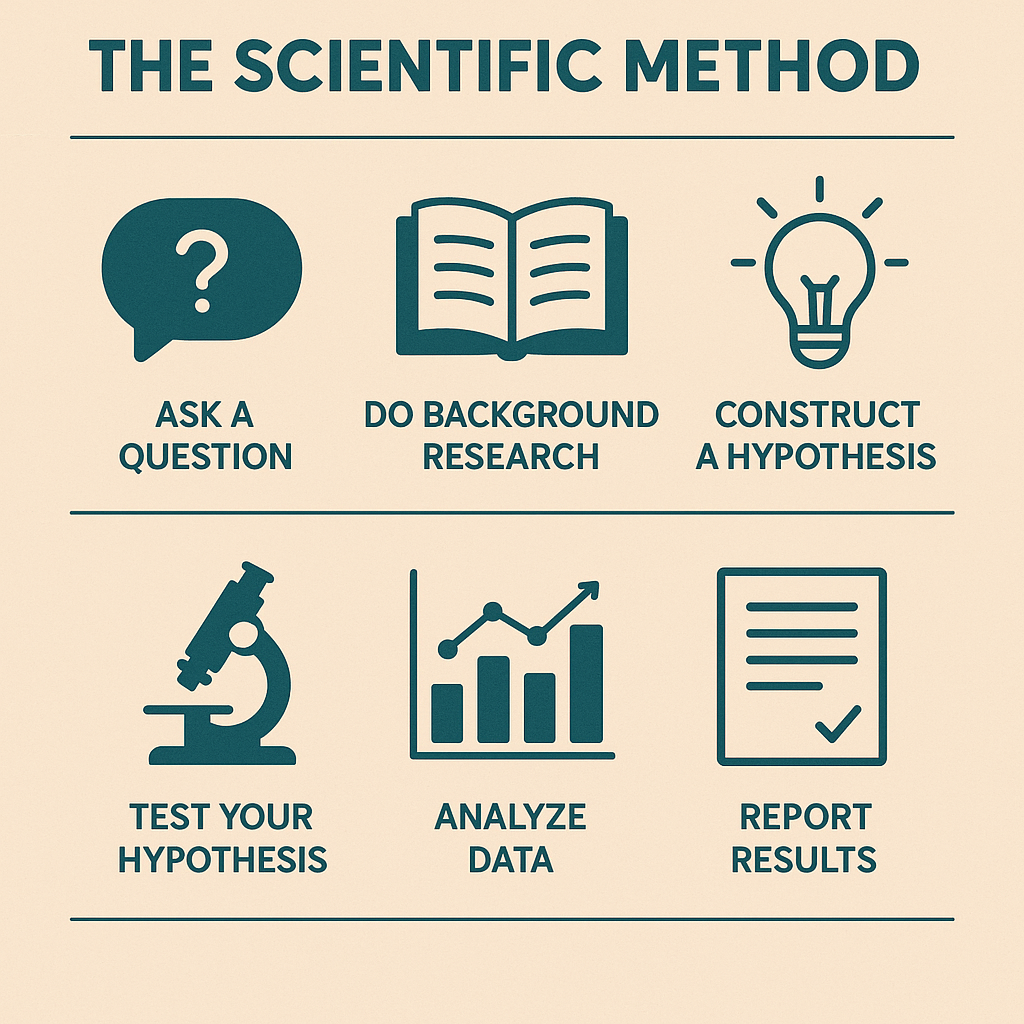Introduction
If you’ve ever asked, “How do scientists find answers to complex questions?” — the answer lies in the scientific method. It’s a logical, step-by-step process used by researchers around the world to explore observations, solve problems, and test ideas.
This guide breaks down the scientific method in simple terms for beginners and shows you how it’s used in everyday life — not just in the lab.
What is the Scientific Method?
The scientific method is a structured approach to discovering how things work through observation and experimentation. It helps scientists (and even students) gather evidence, analyze it, and draw conclusions.
This process reduces bias and error, allowing discoveries to be repeatable and verifiable.
🔬 The 6 Steps of the Scientific Method
1. Ask a Question
Everything starts with curiosity. Scientists begin by asking a specific question based on what they observe.
Example: Why do leaves change color in autumn?
2. Do Background Research
Before diving in, it’s essential to research what is already known. This helps refine your question and design better experiments.
3. Form a Hypothesis
A hypothesis is an educated guess that attempts to answer your question.
Example: Leaves change color because they stop producing chlorophyll when the weather gets colder.
4. Conduct an Experiment
Design a test to check if your hypothesis is correct. This step must include:
- A controlled environment
- Measurable variables
- Repeatability
5. Analyze the Data
Review the results of your experiment. Did the data support your hypothesis or not?
6. Draw a Conclusion and Share Results
Based on your analysis, accept or reject your hypothesis. Share your findings so others can verify or expand upon your work.
🌍 Real-Life Example
Let’s say you notice bread molds faster in a plastic bag than on the counter. You follow these steps:
- Question: Why does bread mold faster in plastic?
- Research: Read about moisture and mold growth.
- Hypothesis: Bread molds faster in plastic due to trapped moisture.
- Experiment: Compare bread in plastic vs. open air.
- Analyze: Measure how quickly mold grows.
- Conclusion: Confirm if your hypothesis was right.
This is the scientific method in action — applied in your own kitchen!
🧠 Why Is the Scientific Method Important?
- It ensures objectivity and accuracy.
- It provides a universal system for inquiry.
- It encourages critical thinking and curiosity.
Whether you’re a student, teacher, or simply curious, understanding the scientific method empowers you to make informed decisions and explore the world scientifically.
❓Frequently Asked Questions
Q: Who invented the scientific method?
A: The scientific method evolved over centuries, with contributions from Aristotle, Roger Bacon, and Galileo.
Q: Is the scientific method only used in science?
A: No! It’s useful in everyday problem-solving, from cooking to troubleshooting tech.
Q: What’s the difference between a theory and a hypothesis?
A: A hypothesis is a testable idea. A theory is a well-supported explanation developed after many tests and observations.

Leave a Reply